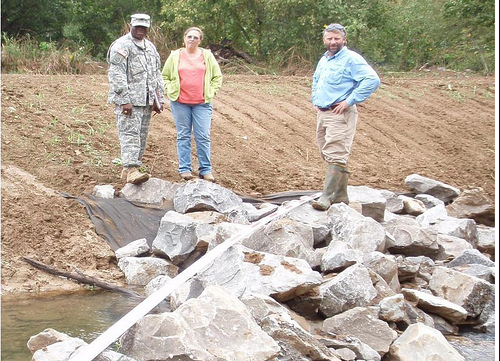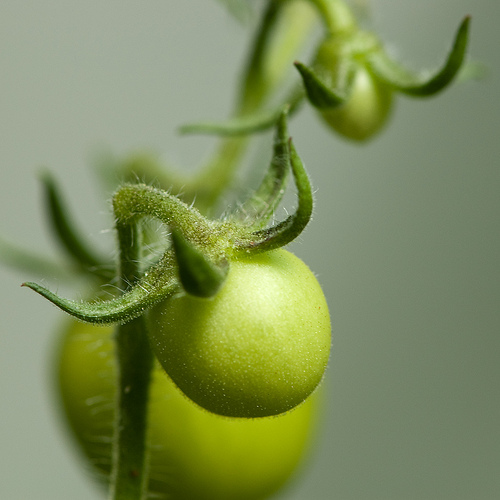While fraud in the Supplemental Nutrition Assistance Program (SNAP) is a relatively limited problem, any amount of waste or abuse is too much. As I wrote back in December, we are taking more aggressive steps to root out fraud and abuse as part of this administration’s Campaign to Cut Waste and to continue improving our stewardship of taxpayer dollars.
This week we were pleased to announce that fiscal year 2012 first quarter results for USDA’s efforts to identify and eliminate fraudulent retailers from SNAP are available. From October 1 through December 31, 2011, USDA took final actions to sanction through fines or temporary disqualifications—more than 225 stores found violating program rules. We also permanently disqualified over 350 stores for trafficking (exchanging benefits for cash) SNAP benefits. Read more »

Earth Team Volunteer Sgt. Patrick Bower, Soil Conservationist Janet Coleman and District Conservationist Kevin Hart inspect a streambank protection jetty.
Volunteers for USDA’s Natural Resources Conservation Service (NRCS) come from all walks of life.
In Tennessee, we’ve been lucky enough to have U.S. Army soldiers, who were injured while serving our nation, volunteer at the Clarksville NRCS Field Office.
Clarksville is only eight miles from Fort Campbell, Ky., a large Army base which straddles the Kentucky and Tennessee border. Fort Campbell is the home of the 101st Airborne Division, Special Forces units, a combat support hospital and sizeable medical facilities. Read more »

SASL team member graduate student Milutin Djurickovic samples greenhouse gases in the long-term Farming Systems Project. (Photo credit Michel Cavigelli)
This post is part of the Science Tuesday feature series on the USDA blog. Check back each week as we showcase stories and news from USDA’s rich science and research portfolio.
Understanding the causes of greenhouse gas (GHG) emissions from agricultural landscapes is truly a multi-scale challenge, with GHG sources ranging from whole plant, to the microscopic microbe level. For example, denitrification, the production of nitrous oxide, is the result of the action of just a few unique enzymes produced by a small number of bacteria and fungi in the soil. These small players have huge importance because nitrous oxide is a greenhouse gas 300 times more powerful than carbon dioxide. Increases in nitrous oxide and other GHGs have been implicated in major global changes such as increased mean annual temperatures, resulting in melting glaciers, increasing floods, and more frequent heat waves. Read more »

Tomatoes on the vine in Hopewell, NJ. The Federal-State Marketing Improvement Program (FSMIP) is a grant program designed to support research projects that improve the marketing, distribution and transportation of agriculture products locally and internationally. Photo by Nosha
In 2010, the New Jersey Department of Agriculture developed a plan to help local growers find new opportunities to bring their fresh, healthy food to consumers and markets within the state. They partnered with Rutgers University’s Food Innovation Center and the New Jersey Department of Family and Community Health Sciences to create healthy recipes from locally grown ingredients that were also tasty and affordable options for school menus. Read more »
In its January 2012 issue, Smithsonian is featuring a look at the world famous site where, on May 18, 1980, a mountain exploded with devastating force.
Located 96 miles south of Seattle and managed by the U.S. Forest Service, the Mount St. Helens National Volcanic Monument provides outstanding recreation, research, and education opportunities — and has a key mission to protect the public in downstream communities. Read more »



